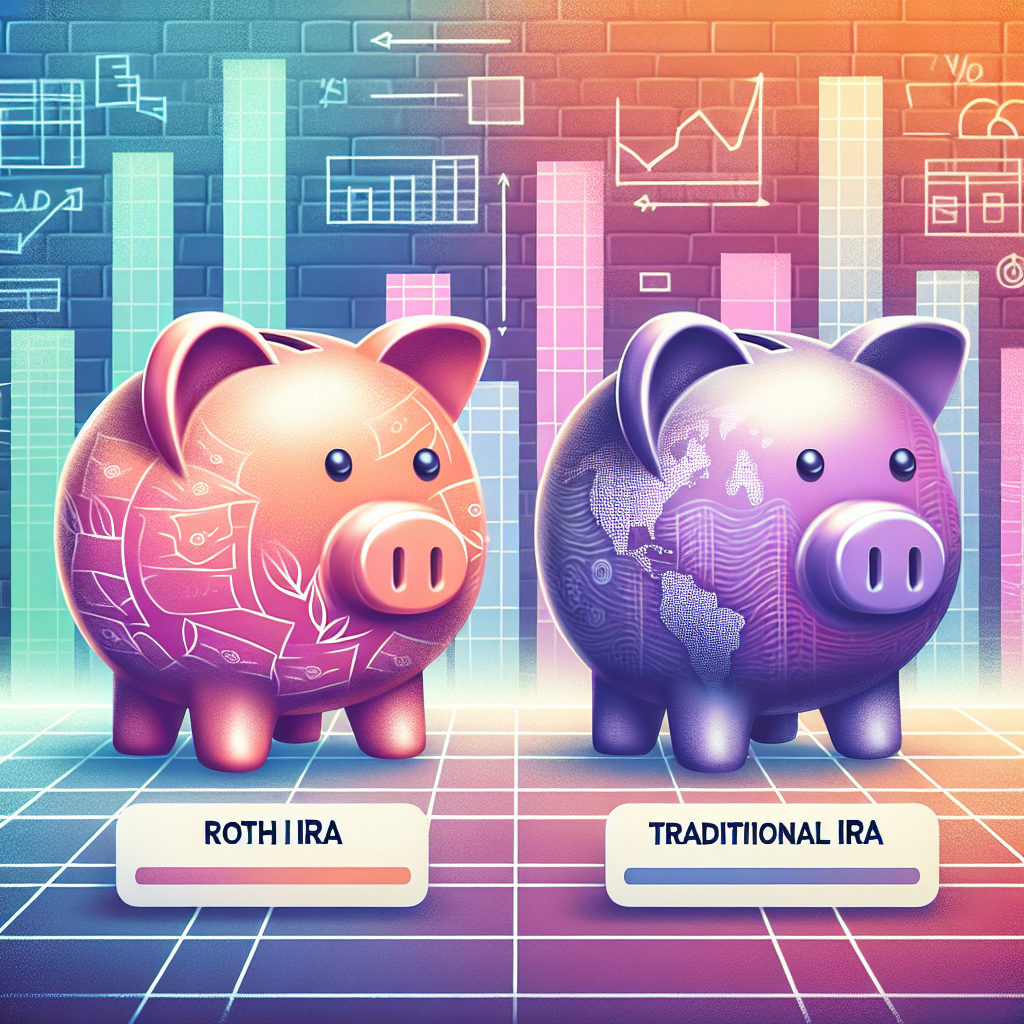When it comes to saving for retirement, individual retirement accounts (IRAs) are an essential tool. Among the most common types of IRAs are the Roth IRA and the Traditional IRA. Deciding between the two can significantly impact your financial future. In this article, we will explore the key differences, benefits, and downsides of each option to help you make an informed choice.
Understanding Traditional IRAs
What is a Traditional IRA?
A Traditional IRA (Individual Retirement Account) allows individuals to save for retirement on a tax-deferred basis. This means that contributions may be tax-deductible, and the investments can grow tax-free until withdrawal.
Benefits of a Traditional IRA
- Tax Deductibility: Contributions may be fully or partially tax-deductible, depending on income levels and whether you’re covered by an employer-sponsored retirement plan.
- Tax-Deferred Growth: All earnings grow tax-deferred, meaning you won’t pay taxes on interest, dividends, or capital gains as long as the funds remain in the account.
- Larger Contribution Limits: For 2023, you can contribute up to $6,500 (or $7,500 if you’re 50 or older).
Downsides of a Traditional IRA
- Taxation Upon Withdrawal: Distributions in retirement are taxed as ordinary income. Depending on your tax bracket at retirement, this could be a significant tax burden.
- Required Minimum Distributions (RMDs): You must begin withdrawals by age 73, whether you want to or not, which can affect your tax situation in your later years.
Understanding Roth IRAs
What is a Roth IRA?
A Roth IRA is a retirement account that allows you to contribute after-tax income. Although contributions are made with income already taxed, qualified withdrawals during retirement are completely tax-free.
Benefits of a Roth IRA
- Tax-Free Withdrawals: Qualified distributions are tax-free, meaning you won’t pay taxes on growth or contributions when you take money out in retirement.
- No RMDs: Roth IRAs are not subject to required minimum distributions during your lifetime, allowing your investments to continue growing without mandatory withdrawals.
- Flexible Withdrawal Rules: You can withdraw contributions (not earnings) at any time without penalty, making it a more flexible option for some individuals.
Downsides of a Roth IRA
- No Immediate Tax Benefits: Contributions are not tax-deductible, which may be a drawback if you are currently in a high tax bracket and want immediate tax relief.
- Income Limits on Contributions: High earners may be restricted from contributing directly to a Roth IRA. For 2023, eligibility begins to phase out for singles with a modified adjusted gross income (MAGI) over $138,000.
Key Differences Between Roth and Traditional IRAs
- Tax Treatment: Traditional IRAs offer tax deductions upfront while Roth IRAs provide tax-free withdrawals in retirement.
- Withdrawal Rules: Traditional IRAs require withdrawals starting at age 73; Roth IRAs do not.
- Eligibility: High-income earners may face limitations with Roth IRAs.
Which IRA Is Right for You?
Determining whether to choose a Roth or Traditional IRA ultimately depends on your financial situation, retirement goals, and tax outlook.
Consider Your Current and Future Tax Situations
If you anticipate being in a lower tax bracket in retirement, a Traditional IRA might be the better choice since you could pay lower taxes on your withdrawals. Conversely, if you expect to be in a similar or higher tax bracket, a Roth IRA could be more advantageous due to its tax-free withdrawals.
Assess Your Age and Time Horizon
Younger individuals or those who have a longer time until retirement might lean towards a Roth IRA, as they can benefit from tax-free growth over many years. On the other hand, if you’re closer to retirement, a Traditional IRA could provide immediate tax relief that can be beneficial.
Consider Your Estate Planning Needs
If leaving a tax-free inheritance to heirs is important to you, a Roth IRA can be an excellent vehicle, as it doesn’t have RMDs during the owner’s lifetime.
Conclusion: Making the Right Choice for Your Future
Ultimately, both Roth and Traditional IRAs offer unique advantages that can greatly enhance your retirement savings strategy. Assess your financial goals, consider your current and future tax situations, and weigh the importance of flexibility in your retirement planning. Consulting with a financial advisor can also help tailor a strategy that best meets your needs. By making an informed decision, you can move one step closer to a secure and prosperous retirement.

